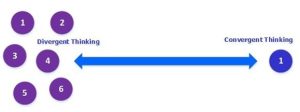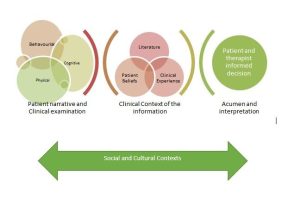Reflecting on Reasoning – Diagnosis

As part of our Clinical Insight series, we will be delivering some short commentaries on clinical reasoning in the New Year. This piece is an introduction to reasoning around a diagnosis. Please do look out for the rest of the series in January 2024.
As clinical practice develops, the evidence for certain forms of practice or interventions in MSK care continues to be challenged in really showing efficacy across some of the most complex MSK conditions.
As MSK practitioners learn more that social determinants and psychological factors in many cases dominate the clinical picture, it leaves clinicians considering their reasoning and how to apply it.
For example, identifying a weak muscle may or may not be relevant. We need to ask ourselves: what do we mean by “weak”, why is it “weak”? If we don’t know why, how can we help it and will that even make a difference?
So, when considered, even the most basic assessment can be confounded by complexity of cause.
But sometimes our assessments, which in reality are a set of observations at a particular time, have to be placed into a “diagnosis”.
What is a diagnosis and who is it for?
Clinical Diagnosis
The clinical diagnosis in the past has encompassed numerous methods, words and meanings.
Pathological models, tissue-based approaches, neuro-biological, behavioural and cognitive designs are some of the models that we can use to summarise clinical findings.
Depending on the context, the diagnosis has a number of requirements for it to have clinical validity. It should be clear to the patient, it should inform the management plan, it should be transferable within the profession and across professions and it should cover the barriers to recovery (why the individual has not recovered naturally).
So, in essence it could describe the symptoms, it can cover why the condition may not be recovering, what the barriers are and also the particular needs of the patient.
Algorithmic type reasoning therefore can be described as convergent (narrowing to one answer), whilst the clinician with reasoning is possibly more divergent (able to offer multiple perspectives/solutions) and opens up multiple links and causes, that may or may not be relevant or modifiable.

Divergent Thinking
So, a divergent thinker still needs to follow a reasoning approach that will lead to a diagnosis and the multiple factors need to be translated into an end-point that makes sense and is transferable.
The initial part of the process starts with a diagnosis of exclusion: no red flags, no signs of a major pathology are assumed and so there is specificity to this and possibly a convergent style and so this is easier to define.
This thinking approach then broadens into whatever model the clinician then follows, and the practitioner describes the area of symptom, barrier (s) to recovery, and then potentially how they link.
This then requires an assessment into how modifiable the factors are, if at all, and if modifiable how can this be achieved. The divergent thinker will not assume that one intervention affects one observation, and it is down to the reasoning relationship that is set up with the patient that allows for these clinical observations to be monitored with a set of goals that are made collaboratively.
The divergent thinker than perhaps applies this diagnosis within the evidence base and delivers it with a person-centred approach.
It becomes clear that even constructing a diagnosis is complex, let alone the applied plan to help.
